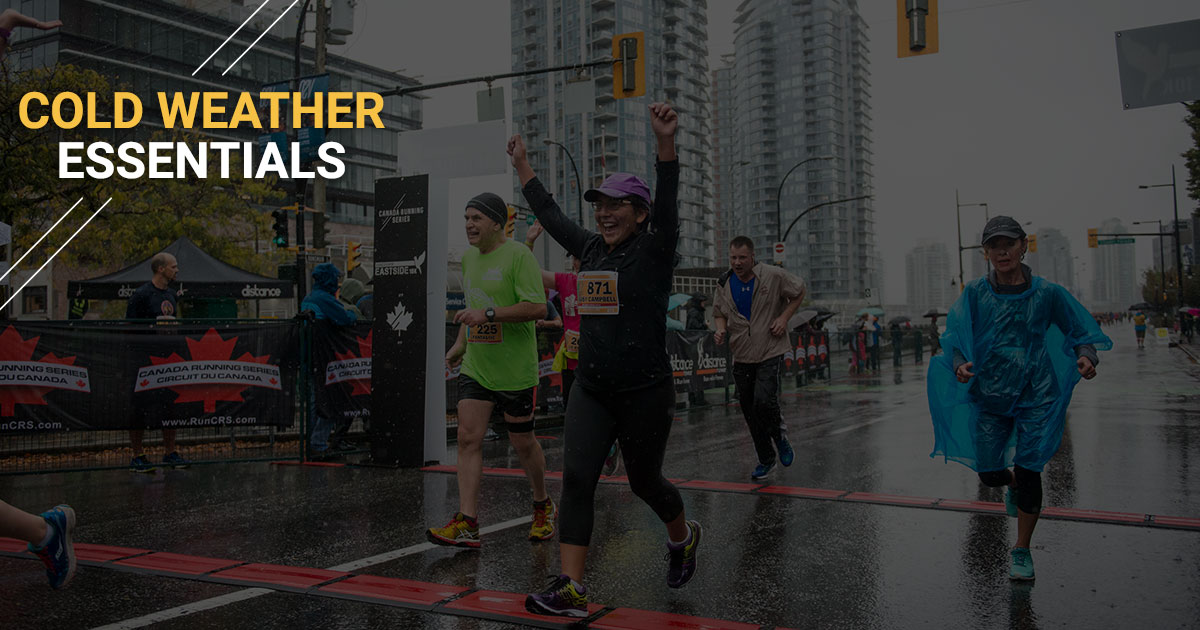
As the days get colder, the need for proper winter attire becomes more essential. On the west coast we’re fortunate to have fairly mild winters compared to the typically snow-ridden eastern compatriots. However, if this year’s winter is anything like last year, we’ll all be pulling out our Yak Traks and coziest winter apparel as some point this season.
Our bodies generally require a longer warmup for workouts when running in colder temperatures. However, they also cool down exponentially faster after workouts. Take this into consideration when dressing for the elements. Starting a run off looking like the Michelin Man may initially feel like a good idea, but when you start to overheat and have to lug all of your kit for your run, it’s not ideal. On the other hand, if you wear too little, you may warm up eventually but you’ll be freezing as soon as you stop moving. So here are some things to keep in mind:
Dress in layers.
Ideally have a thin, moisture wicking shirt against your skin. Top that with a light-weight jacket or vest depending on the temperatures. Keeping your core warm is crucial, so when it’s really cold out, opting for a vest and jacket isn’t a bad option.
Opt for tights.
Whether they’re half tights, or full tights, wearing an extra layer on your legs will help keep the muscles warm while they work. Cold muscles put you at risk of injury as they won’t be able to warmup enough to feel fluid in their movements. Wearing a pair of tights, or looser fitting pants for more bashful folks, will keep your body heat from escaping too fast and will consequently keep your legs warmer.
Don’t forget your head.
Most of our body heat is lost through our heads. Some people find hats too warm even on the coldest of days, so will opt for headbands/ear warmers instead. Both options will keep your ears, and head warm.
Maintain your dexterity.
Even in above freezing temperatures, it’s wise to wear a thin pair of gloves. Depending on the weather, thin, wind-resistant gloves are great in above freezing temperatures, whereas heavier water-proof mitts are ideal for below freezing chills. Frozen hands are incredibly uncomfortable, and make it difficult to do anything after your run. Have a pair of gloves on hand to avoid battling with your keys to turn on your car, or fighting to change into warm clothes.
Dry feet are happy feet.
The duration of your run will help determine the need for waterproof shoes. If you plan on being out for a long run, it might be worth wearing waterproof shoes that will delay any discomfort that occurs from cold and wet feet. If you’re out for a short run, wet feet won’t matter as much if you’re heading straight home. Just make sure to stuff your shoes with newspaper, and place them by a heater in order to dry faster.
Protect your eyes and skin.
If snow has fallen, and it’s still bright out, protect your skin and eyes. The sun’s harmful UV rays can still pass through clouds. In addition to hitting your skin, the reflection from snow can make the intensity that much stronger. Use sunscreen on bright days, and use sunglasses to protect your eyes.
It’ll take a few runs to figure out how hot you run, or how cold you stay while outside training. Just remember that as long as the footing is okay, and you’ve dressed properly, any weather is runnable!







